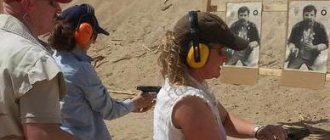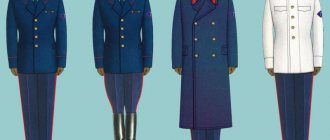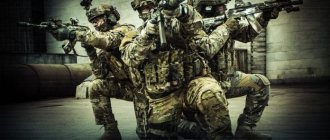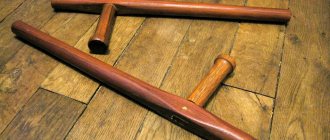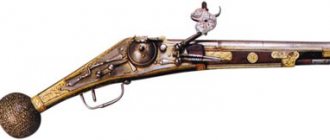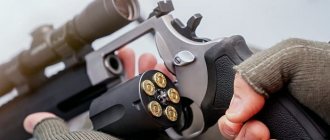Cases when police have the right to use their service weapons against a rioter are regulated by law. This usually occurs when neutralizing a particularly dangerous criminal who directly threatens the life and health of civilians.
A police officer can personally make this decision if, while on duty, he participates in neutralizing the offender, or on the orders of a superior in rank.
In the latter case, all responsibility falls on the one who gave the order. A police officer comes under criminal liability only if there were no grounds for shooting, or the shooting was carried out at persons who cannot be fired at without the most serious reasons.
The law clearly defines the list of situations when a police officer has the right to use weapons. Exceeding official powers is punishable under the relevant article.
If a police officer unlawfully used a weapon while not on duty, then he will be held liable under other articles - as a civilian. If a citizen (a criminal or a passerby who happened to be nearby) was injured during the shooting and believes that the police officer acted illegally, he should go to court.
Do you want to figure it out, but don’t have time to read the article? Lawyers will help
Entrust the task to professionals. Lawyers will complete the order at the cost you specify
141 lawyers on RTIGER.com can help with this issue
Solve the issue >
When the police have the right to use firearms
The use of firearms must strictly correspond to the situation at hand. Police officers must make such decisions based on the grounds for shooting prescribed by law. Often there is not much time to think; it is necessary to act quickly and clearly, which increases the responsibility assigned to the police.
By law, a police officer is required to introduce himself and warn of his intentions, and then give the criminal the opportunity to comply with all requirements. However, the law allows a police officer to go straight to shooting if the criminal must be stopped immediately. The list of situations when authorized persons can use firearms is quite specific:
- The offender attacks a police officer or someone else, and his actions can lead to serious injury or death.
- The criminal is trying to seize weapons, special and military equipment, and vehicles that belong to the police.
- The police release the hostages.
- A police officer caught a criminal performing an action that showed signs of a serious or especially serious crime against life, health or someone else’s property. The criminal is trying to escape, and it is impossible to detain him by other methods.
- Police apprehend a resisting group of armed criminals.
- An armed criminal refuses to comply with the lawful demands of the police and surrender weapons, explosives, toxic and radioactive substances, ammunition, and explosive mechanisms.
- The police repulse armed attacks on public, private, municipal institutions, other premises and structures, citizen organizations, etc.
- When stopping an attempt to escape accused and suspects from places of detention or from under escort, or when attempting to illegally release persons.
- The criminal stole a vehicle, refuses to comply with repeated demands from the police and creates life-threatening situations for citizens on the road.
- We are talking about a dangerous animal that threatens the life and health of police officers and citizens.
- The Ministry of Internal Affairs needs to break into the beast or destroy any other locking mechanism that prevents entry into the premises for one legal reason or another.
- The policeman fires a warning shot in the air. This shot can also serve as an alarm or a request for help. The shot must be fired either upwards or in any other direction that is safe for others.
The use of firearms, especially shooting to kill, indicates the extreme seriousness of the situation, which cannot be resolved by other methods. Cases where police are careful not to shoot, even when the situation requires it, are quite common. This is due to the fact that it is not always possible at first glance to assess the situation as clearly requiring the use of weapons.
The law also contains strict prohibitions on shooting at women, children (if the policeman is aware of the age initially or can be determined by appearance), and people with disabilities.
Exceptions are cases when these persons are armed and attack someone. Also, a police officer has no right to shoot if he is among a large crowd of people, as this can lead to injury and injury to innocent people.
Police Law and Firearms
The possibility of direct use of weapons by police is directly provided for by the provisions of Federal Law No. 3 of 02/07/2011. This is the Law “On the Police,” which strictly regulates the basic principles of police activities, is publicly available and allows citizens to become familiar with their rights and responsibilities in the context of contact with law enforcement government agencies. In particular, understanding the principles of the possibility of law enforcement officers using lethal weapons can help avoid the disastrous consequences of various actions.
Art. is directly devoted to the use of lethal firearms by the police. 23 of the above-mentioned Federal Law, which provides an exhaustive list of grounds according to which a police officer can use firearms, including firing to kill. Also, it should be remembered that in addition to the aforementioned weapons, the police also have an extensive arsenal of special means, which can also be used by them in certain conditions.
In addition, this law also provides for situations in which police officers are expressly and unconditionally prohibited from using weapons. At the same time, citizens, in accordance with the provisions of the clarifications of the resolution of the Plenum of the Armed Forces of the Russian Federation No. 26 of November 27, 2012, can resist such unlawful actions of police officers in the order of necessary self-defense or extreme necessity.
For example, police officers, regardless of the circumstances, do not have the right to use firearms in large gatherings of people, as well as in any other situations where there is a chance of hitting persons not involved in lawlessness.
What is the guarantee that law enforcement will maintain the rule of law?
The law stipulates guarantees that the personal safety of police officers will be respected. A police officer has the right to use firearms or put them on full alert if, in his opinion, at least one of the above reasons occurs.
When a person has a weapon in his hands and he makes an attempt to approach him, covering the distance very quickly, or tries to touch his service weapon, then the law enforcement officer is allowed to use the weapon he has.
It is prohibited to use weapons against disabled people if it is clearly visible, women and minors (if the policeman knows how old or it is clearly visible). But in case of resistance from these groups of citizens, an attack by several people or with weapons, or in the event of dangerous actions that threaten health and life, weapons can be used.
The use of weapons is considered to be the most serious measure of crime suppression, since it can cause serious bodily harm, and sometimes death can occur. In this case, the police officer must have an additional guarantee of legal protection of his own actions. Each case of a shot is reported in writing within 24 hours; it is also necessary to inform the head of the police department at the place of work.
In addition, the report can be filed at the location of the police officer at the moment. If there is a need, then the boss will order an official inspection, after which the legality of using the weapon will be determined. If, after using a weapon, the criminal was injured or killed, then the prosecutor must be notified immediately.
When can a police officer use a weapon?
A police officer has the right to use firearms in the following cases:
- If it is necessary to stop a moving vehicle by damaging it, if the offender causes a life-threatening situation for people and does not respond to the request to stop.
- A police officer has the right to use a firearm to neutralize an animal or vehicle if necessary.
- To signal about impending danger. He can make a warning signal to call someone for help.
- A police officer has the right to use firearms to destroy various types of structures that are an obstacle to the police officer’s entry into a residential or any other premises.
- Also, employees of the Ministry of Internal Affairs can enter all premises belonging to citizens at any time. In addition, it is not even necessary that the owners of the home be present in it.
Why do police use guns?
The right to use firearms is primarily related to preventing the commission of a crime. When the assigned powers are exercised, only police officers and other law enforcement officers have the right to arms. This preventive measure is associated with certain administrative and legal norms. The use of weapons is considered a measure of administrative restraint. So, let's figure out when a police officer has the right to use firearms.
When can weapons be used?
The legislation defines all possible situations when a police officer has the right to use firearms.
It says that an object to which a weapon can be used is a person who intentionally commits actions that threaten the lives of others. Any manipulations with weapons that are permitted by law, for example, demonstrations, pointing at a person in order to scare them to stop a crime, striking with a weapon without firing, as a rule, are not recognized as its use.
When can special means be used?
- To repel an attack on another person or a police officer.
- To stop an administrative crime.
- To overcome the resistance that was shown to the employee.
- To detain a person who was caught while committing an illegal act and tried to escape.
- To detain the criminal if he resists.
- To deliver to the police, to act as a convoy and to protect a detainee, a prisoner, a convicted person, and so on.
- To eliminate crowd disturbances or other similar actions that interfere with the movement of vehicles, people, or communications.
- To stop a vehicle whose driver does not comply with the request to stop.
- To detect a crime.
- To protect protected objects, to prevent a group of people who commit criminal acts from being overrun.
When can you use a weapon when entering a room?
According to the law, a police officer has the right to use firearms when trying to enter a premises in several cases:
- To save people or their property if a dangerous situation arises, and in case of mass unrest - to ensure and control the safety of ordinary citizens.
- In order to detain citizens who, in the opinion of the police, have committed criminal acts.
- To stop impending crimes.
- To clarify the circumstances of the accident.
On what basis can physical force or special means be used?
Everything that a police officer has or does not have the right to do is spelled out in federal law. What kind of special equipment a police officer should have is established only by the government, and it is impossible to use such equipment that can seriously injure or become a source of completely unjustified risks.
Each employee must undergo preliminary training, as well as tests to determine their suitability for actions that require the use of force or weapons.
When is physical force used?
According to the law, police officers are allowed to use physical force in the following situations:
- To prevent the commission of a crime.
- To deliver to the office premises (department) the criminal who committed the crime and to detain him.
- In order to overcome resistance to the actions of the policeman.
